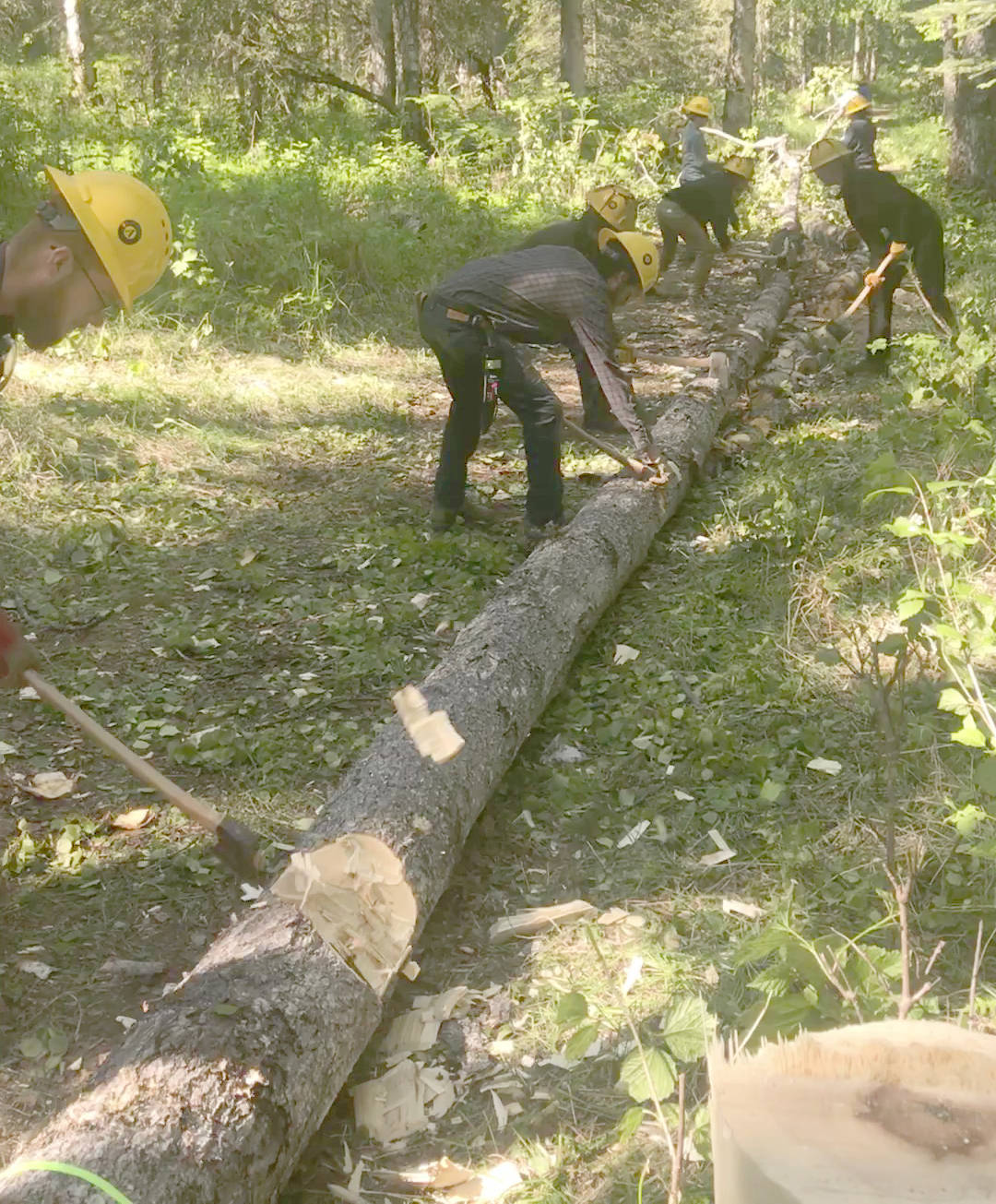It is the time of year for reflection, where we look back at the year and express gratitude for the many good things that happened, whether that be time spent with family, epic trails hiked or vistas seen. It can also be a time to look forward and make plans for the new year and the memories we will make.
2019 was as memorable for Kenai National Wildlife Refuge staff as it was for most Kenai Peninsula residents. The hot, dry weather combined with the Swan Lake Fire — and its associated smoke and traffic delays — to make it a summer that would not be easy to forget.
Our summer was one of frenetic pace, leaving memories of smoke, traffic and gratitude for all those that worked tirelessly to protect our neighbors and towns. Upon additional reflection, I thought I would take this time to point out an opportunity to look back a little further and review some historic documents from the earlier days of Kenai National Wildlife Refuge.
Nine years ago, soon after I started as the Deputy Refuge Manager at Kenai National Wildlife Refuge, I began to read through our library of documents to obtain some of the back story and history surrounding decisions that were made that influenced the refuge.
An excellent source of information were the Annual Narratives. Annual Narratives detail the actions, issues and people that were noteworthy that year from the Refuge Manager’s perspective.
The earliest narrative that we have on file is from 1948. Although the refuge was established in 1941, the refuge had no on-site staff until 1948, so no narratives were written for those years. These early narratives documented the conditions of the then Kenai Moose Range, work that was done to establish the first office and early staffing.
Usually, multiple copies of the narratives were made by each refuge. In addition to a copy kept at the refuge, at least one copy was sent to the regional office in Anchorage and shared with other refuges in Alaska. This resulted in both humorous and not-so-humorous comments written in the margins by other managers as they read them.
Several years ago, the U.S. Fish and Wildlife Service partnered with the Alaska Resources Library and Information Services to scan these narratives. The narratives are now available on ServCat (https://ecos.fws.gov/servcat) and can be accessed by everyone.
If you are looking for just the narratives, there is a button on the ServCat homepage that allows you to select “Refuge Annual Narrative Reports.” Use the search tool to narrow the list down to just Kenai National Wildlife Refuge.
The last narrative that was written for Kenai refuge was for the year 1995. Today we have a different reporting system that is standardized and allows all refuges to input data that can be easily analyzed at the headquarters level.
Compiling the narratives was always time consuming, but I do miss being able to look back to one document that provides a glimpse into the work that went on that year and the people associated with the work. To me, the narratives were like a holiday letter that told the story of our accomplishments and challenges and described how staff worked with each other and our partners to manage this amazing refuge.
ServCat also has many other documents from Kenai refuge’s library. We had a great volunteer (who shall remain nameless but much appreciated) who uploaded hundreds of documents to this same site that I am still slowly going through and making available to the public.
The pace of this job has slowed now that I do not have this volunteer giving me “that look” while asking how the review is going.
This brings up the second part of the end-of-the-year tradition … looking forward. In addition to the plan of making more documents available on the ServCat website, the Kenai refuge has a long list of work planned for 2020.
The obvious is the repair work from the Swan Lake Fire. There is still much work that needs to be done to open up some of our most popular trails. Skyline, Fuller Lakes, Kenai River, Seven Lakes, Marsh Lake, Hideout and Surprise Creek trails all remain closed due to trees down across the trails.
All of these trails have been cleared, but tree fall continues with every storm. Our hope is to see hikers using these trails in the spring as we work to keep them open.
I am excited to tell you that, prior to the Swan Lake Fire, we were working on plans to connect a couple of our popular trails within the Skilak Wildlife Recreation Area.
With the help of the Student Conservation Association, we will be able to do this work during the summer of 2020. We will be constructing a connection between Hideout Trail and Burney’s trails as well as a connection between Vista and Skilak Lookout trails.
We also plan to finish the restoration work, begun in 2019, to re-connect Pollard Horsetrail to Bear Creek Trail near Tustumena Lake. Our vision is to reopen the trails impacted by the Swan Lake fire and add additional experiences with additional trail connections.
These projects and many others await us this next year. We hope that you and your family can come out to your refuge and make some of your own memories here.
Steve Miller is the Deputy Manager at Kenai National Wildlife Refuge. Find more information about the Refuge at http://kenai.fws.gov or http://www.facebook.com/kenainationalwildliferefuge.

